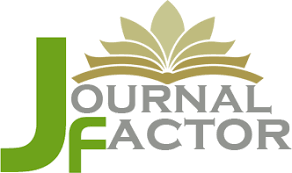The influence of Two Surface Treatment Techniques with Different Adhesive Systems on the Shear Bond Strength of Composite Resin Repair Shaban A. Aml
DOI:
https://doi.org/10.54361/LJMR.19.1.08Keywords:
composite repair, surface treatment, bonding procedures, shear bond strengthAbstract
purpose: To evaluate the influence of different adhesive application protocols with two surface treatment methods on the shear bond strength of aged composite repair.
Material and methods: 90 cylindrical shaped samples (8mm × 4mm) were prepared from Estelite Sigma Quick composite resin, After the thermocycling thesamples were divided into two main groups according to the surface treatment and then each group were further subdivided to five groups according to bonding procedures. For the repair, the same brand of old composite with same shade was used. Then the shear bond strength test was completed by the Universal Testing Machine. For statistical analysis the IBM SPSS statistics program was used (SPSS IBM, Turkey).
Results: There was statistical significant difference between the shear bond strength values in Mpa among all sub-groups.
conclusion: The shear bond strength obtained by the mechanical surface grinding with diamond bur is statistically significant higher than that obtained with air abrasion surface treatment. The combination of universal adhesive system or two-step self-etch adhesive system and grinding with diamond bur for repair procedures provide the highest values of SBS.
Downloads
References
Ferracane JL. Current trends in dental composites. Crit Rev Oral Biol Med 6(4):302–18, 1995.
Cenci M, Demarco F, de Carvalho R. Class II composite resin restorations with two polymerization techniques: relationship between microtensile bond strength and marginal leakage. J Dent 2005;33:603–10.
Gordan VV et al. Repair or replacement of defective restorations by dentists in The Dental PBRN J Am Dent Assoc. 2012 June; 143(6): 593–601.
Demarco FF, Collares K, Corra MB, Cenci MS, Moraes RR, Opdam NJM. Should my composite restorations last forever? Why are they failing?
Demarco FF. et al. Longevity of posterior composite restorations: Not only a matter of materials dental materials 28 (2012) 87-101.
Hasani Tabatabaei M, Alizade Y, Taalim S. Effect of various surface treatment on repair strength of composite resin.
Padipatvuthikul P, Mair LH. Bonding of composite to water aged composite with surface treatments. Dent Mater. 2007; 23: 519-25.
Söderholm KJ, Roberts MJ. Variables influencing the repair strength of dental composites. Scand J Dent Res 99:173-80, 1991.
Trajtenberg CP, Powers JM. Bond strengths of repaired laboratory composites using three surface treatments and three primers.Am J Dent 2004; 17: 123-126.
Brendeke J, Ozcan M. Effect of physicochemical aging conditions on the composite-composite repair bond strength. J Adhes Dent 9:399-406, 2007.
Albers HF. Tooth Colored Restoratives Principles and Techniques, 9th ed. Hamilton: BC Decker Inc p. 148-52, 2002.
Rodrigues, S.A., Jr.; Ferracane, J.L.; Della Bona, A. Influence of surface treatments on the bond strength of repaired resin composite restorative materials. Dent. Mater 25, 442–451, 2009.
Hemadri M, Saritha G, Rajasekhar V, Pachlag KA, Purushotham R, Reddy VKK. Shear Bond Strength of Repaired Composites Using Surface Treatments and Repair Materials: An In vitro Study, Journal of International Oral Health 6(6): 22-25, 2014.
Melo MA, Moysés MR, Santos SG, Alcântara CE, Ribeiro JC. Effects of different surface treatments and accelerated artificial aging on the bond strength of composite resin repairs. Braz Oral Res 2011; 25: 143-149.
Shahdad SA, Kennedy JG. Bond strength of repaired anterior composite resins: An in vitro study. J Dent 1998; 26(8):685-694.
Brosh, T.; Pilo, R.; Bichacho, N.; Blutstein, R. Effect of combinations of surface treatments and bonding agents on the bond strength of repaired composites.
Shahdad SA, Kennedy JG. Bond strength of repaired anterior composite resins: An in vitro study. J Dent 1998; 26(8):685-694.
Lucena-Mart′in C, Gonza′lez-L′opez S, Navajas-Rodr´I guez de Mondelo JM. The effect of various surface treatments and bonding agents on the repaired strength of heat-treated composites.
Cavalcanti AN, De Lima AF, Peris AR, Mitsui FH, Marchi GM. Effect of surface treatments and bonding agents on the bond strength of repaired composites.
Versluis A, Tantbirojn D, Douglas WH. Why do shear bond tests pull out dentin? J Dent Res 76: 1298-1307, 1997.
Söderholm KJ, Roberts MJ. Variables influencing the repair strength of dental composites. Scand J Dent Res 99:173-80, 1991.
Rathke A, Tymina Y, Haller B Effect of different surface treatments on the composite-composite repair bond strength. Clin Oral Investig 13(3):317–323, 2008.
Da Costa, T.R.; Serrano, A.M.; Atman, A.P.; Loguercio, A.D.; Reis, A. Durability of composite repair using different surface treatments. J. Dent 40, 513–521, 2012.
Rathke A, Tymina Y, Haller B Effect of different surface treatments on the composite-composite repair bond strength. Clin Oral Investig 13(3):317–323, 2008.
Brosh, T.; Pilo, R.; Bichacho, N.; Blutstein, R. Effect of combinations of surface treatments and bonding agents on the bond strength of repaired composites. J. Prosthet. Dent. 1997, 77, 122–126.
Tabatabaei MH, Alizade Y, Taalim S. Effect of various surface treatments on repair strength of composite resin. J Dent TUMS 1:5-11, 2004.
Bonstein T, Garlapo D, Donarummo J Jr, Bush PJ. Evaluation of varied repair protocols applied to aged composit resin. J Adhes Dent 2005; 7: 41-49.
Cavalcanti AN, De Lima AF, Peris AR, Mitsui FH, Marchi GM. Effect of surface treatments and bonding agents on the bond strength of repaired composites. J Esthet Restor Dent 2007; 19(2):90- 98; discussion 99.
Tabatabaei MH, Alizade Y, Taalim S. Effect of various surface treatments on repair strength of composite resin. J Dent TUMS 1:5-11, 2004.
Lucena-Mart′in C, Gonza′lez-L′opez S, Navajas-Rodr´I guez de Mondelo JM. The effect of various surface treatments and bonding agents on the repaired strength of heat-treated composites. J Prosthet Dent 86:481-488, 2001.
Kiomarsi N, Espahbodi M, chiniforush N, Karazifard MJ, Hashemi Kamangar SS in vitro evaluation of repair bond strength of composite: Effect of surface treatments with bur and laser and application of universal adhesive.
Pinar Altinci, Murat Mutluay & Arzu Tezvergil-Mutluay Repair bond strength of nanohybrid composite resins with a universal adhesive, Acta Biomaterialia Odontologica Scandinavica.
Cavalcanti AN, De Lima AF, Peris AR, Mitsui FH, Marchi GM. Effect of surface treatments and bonding agents on the bond strength of repaired composites. J Esthet Restor Dent 2007; 19(2):90- 98; discussion 99.
Fawzy AS, El-Askary FS, Amer MA (2008) Effect of surface treatments on the tensile bond strength of repaired water-aged anterior restorative micro-fine hybrid resin composite. J Dent 36 (12):969–976.
Ahmadizenouz G, Esmaeili B, Taghvaei A, Jamali Z, Jafari T, Amiri Daneshvar F, Khafri S. Effect of different surface treatments on the shear bond strength of nanofilled composite repairs. J Dent Res Dent Clin Dent Prospects 2016; 10(1):9-16.
Tabatabaei MH, Alizade Y, Taalim S. Effect of various surface treatments on repair strength of composite resin. J Dent TUMS 1:5-11, 2004.
Burrow MF, Nophakeepong U, Phrukkanon S: A comparison of mi-crotensile bond strengths of several dentin bonding systems to primary and permanent dentin. Dent-Mat 18: 239-24, 2002.
Pinar Altinci, Murat Mutluay & Arzu Tezvergil-Mutluay Repair bond strength of nanohybrid composite resins with a universal adhesive, Acta Biomaterialia Odontologica Scandinavica, 4:1, 10-19, DOI: 10.1080 / 23337931.1412262, 2017.
Downloads
Published
Issue
Section
License
Copyright (c) 2025 Aml .A .Shaban (Author)

This work is licensed under a Creative Commons Attribution-NonCommercial-NoDerivatives 4.0 International License.
Open Access Policy
Libyan journal of medical Research (LJMR).is an open journal, therefore there are no fees required for downloading any publication from the journal website by authors, readers, and institution.
The journal applies the license of CC BY (a Creative Commons Attribution 4.0 International license). This license allows authors to keep ownership f the copyright of their papers. But this license permits any user to download , print out, extract, reuse, archive, and distribute the article, so long as appropriate credit is given to the authors and the source of the work.
The license ensures that the article will be available as widely as possible and that the article can be included in any scientific archive.
Editorial Policy
The publication of an article in a peer reviewed journal is an essential model for Libyan journal of medical Research (LJMR). It is necessary to agree upon standards of expected ethical behavior for all parties involved in the act of publishing: the author, the journal editorial, the peer reviewer and the publisher.
Any manuscript or substantial parts of it, submitted to the journal must not be under consideration by any other journal. In general, the manuscript should not have already been published in any journal or other citable form, although it may have been deposited on a preprint server. Authors are required to ensure that no material submitted as part of a manuscript infringes existing copyrights, or the rights of a third party.
Authorship Policy
The manuscript authorship should be limited to those who have made a significant contribution and intellectual input to the research submitted to the journal, including design, performance, interpretation of the reported study, and writing the manuscript. All those who have made significant contributions should be listed as co-authors.
Others who have participated in certain substantive aspects of the manuscript but without intellectual input should only be recognized in the acknowledgements section of the manuscript. Also, one of the authors should be selected as the corresponding author to communicate with the journal and approve the final version of the manuscript for publication in the LJMR.
Peer-review Policy
- All the manuscripts submitted to LJMR will be subjected to the double-blinded peer-review process;
- The manuscript will be reviewed by two suitable experts in the respective subject area.
- Reports of all the reviewers will be considered while deciding on acceptance/revision or rejection of a manuscript.
- Editor-In-Chief will make the final decision, based on the reviewer’s comments.
- Editor-In-Chief can ask one or more advisory board members for their suggestions upon a manuscript, before making the final decision.
- Associate editor and review editors provide administrative support to maintain the integrity of the peer-review process.
- In case, authors challenge the editor’s negative decision with suitable arguments, the manuscript can be sent to one more reviewer and the final decision will be made based upon his recommendations.












